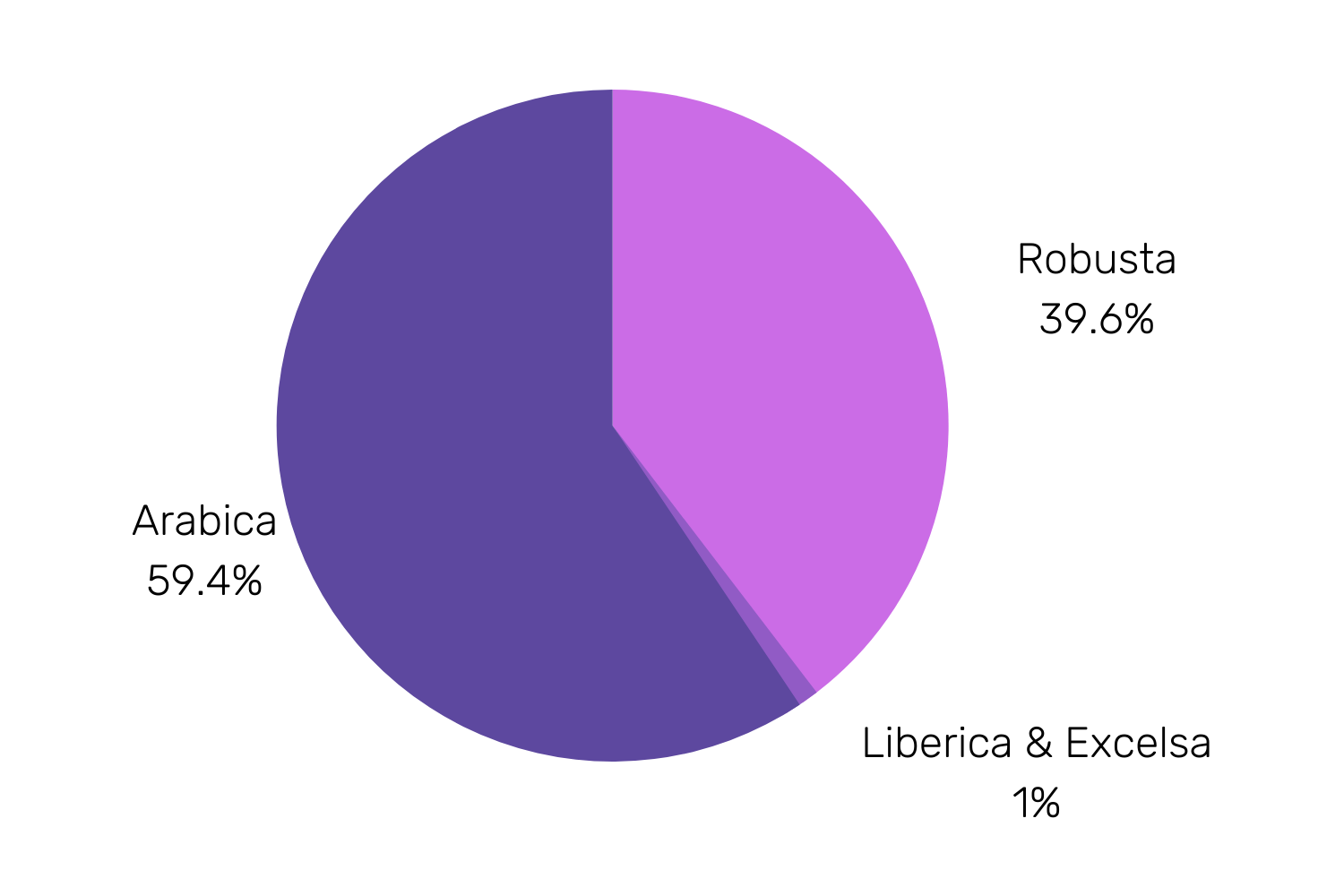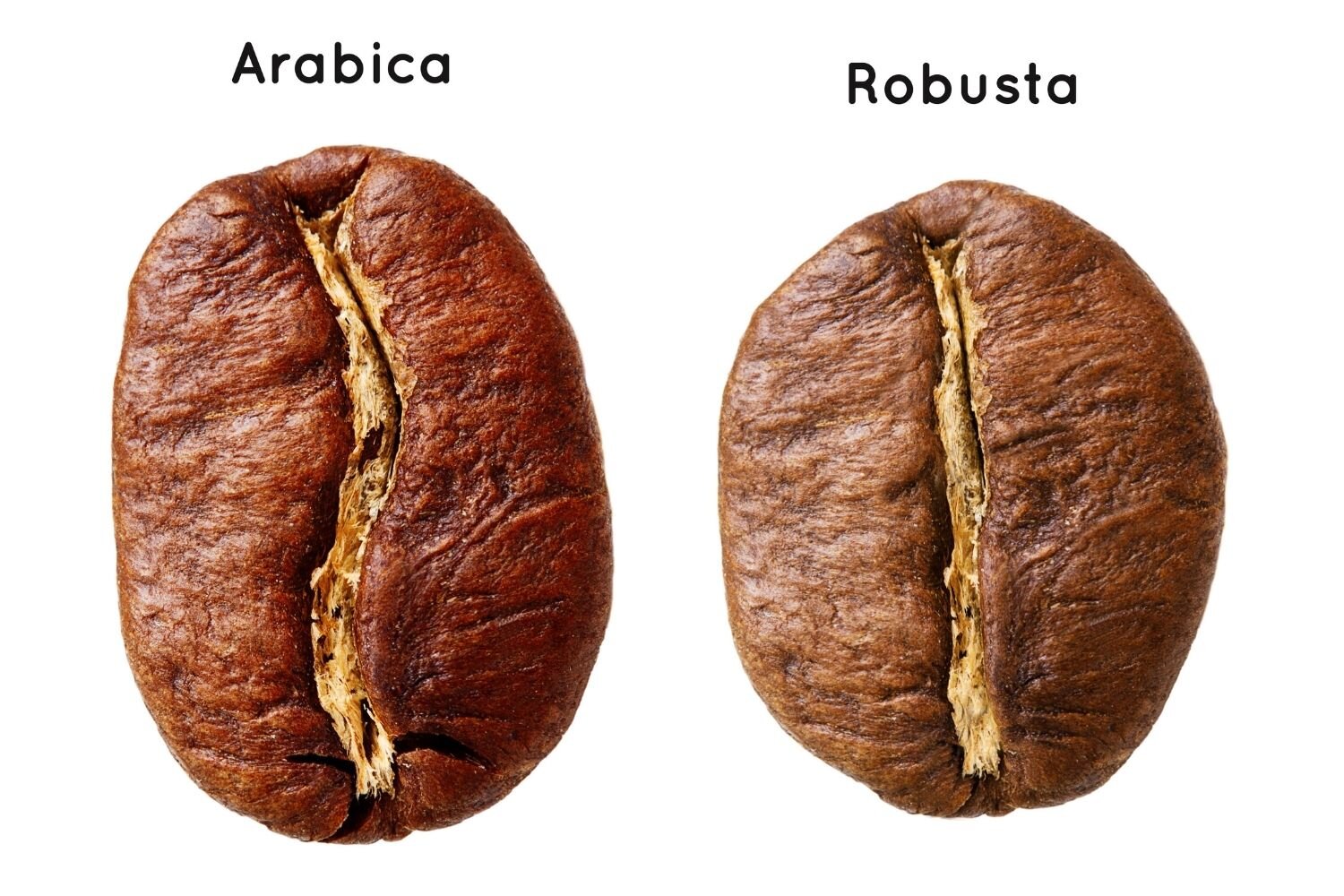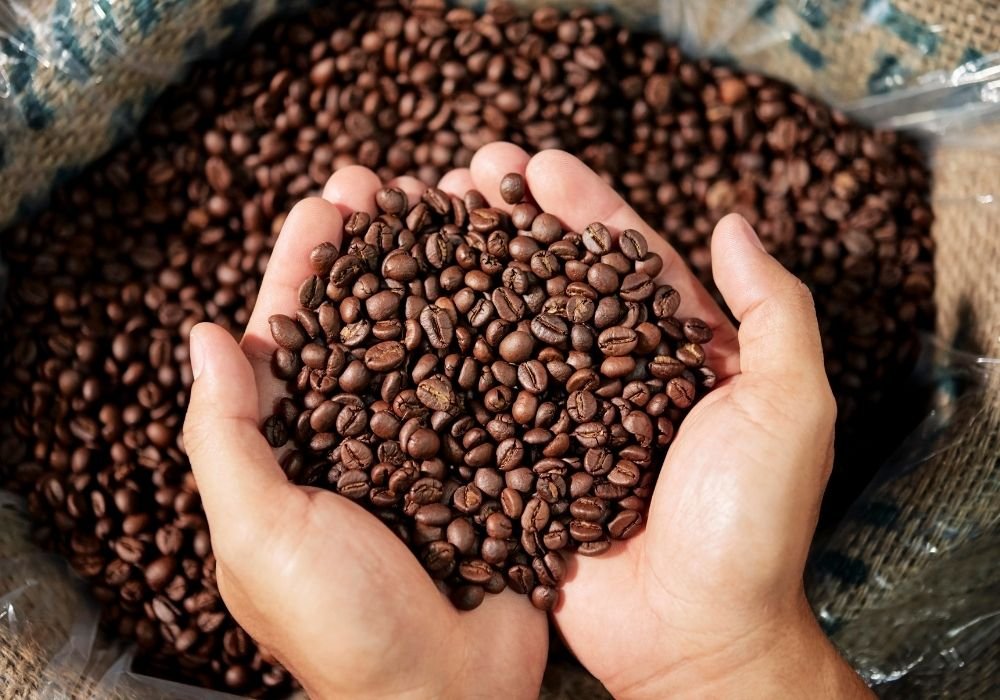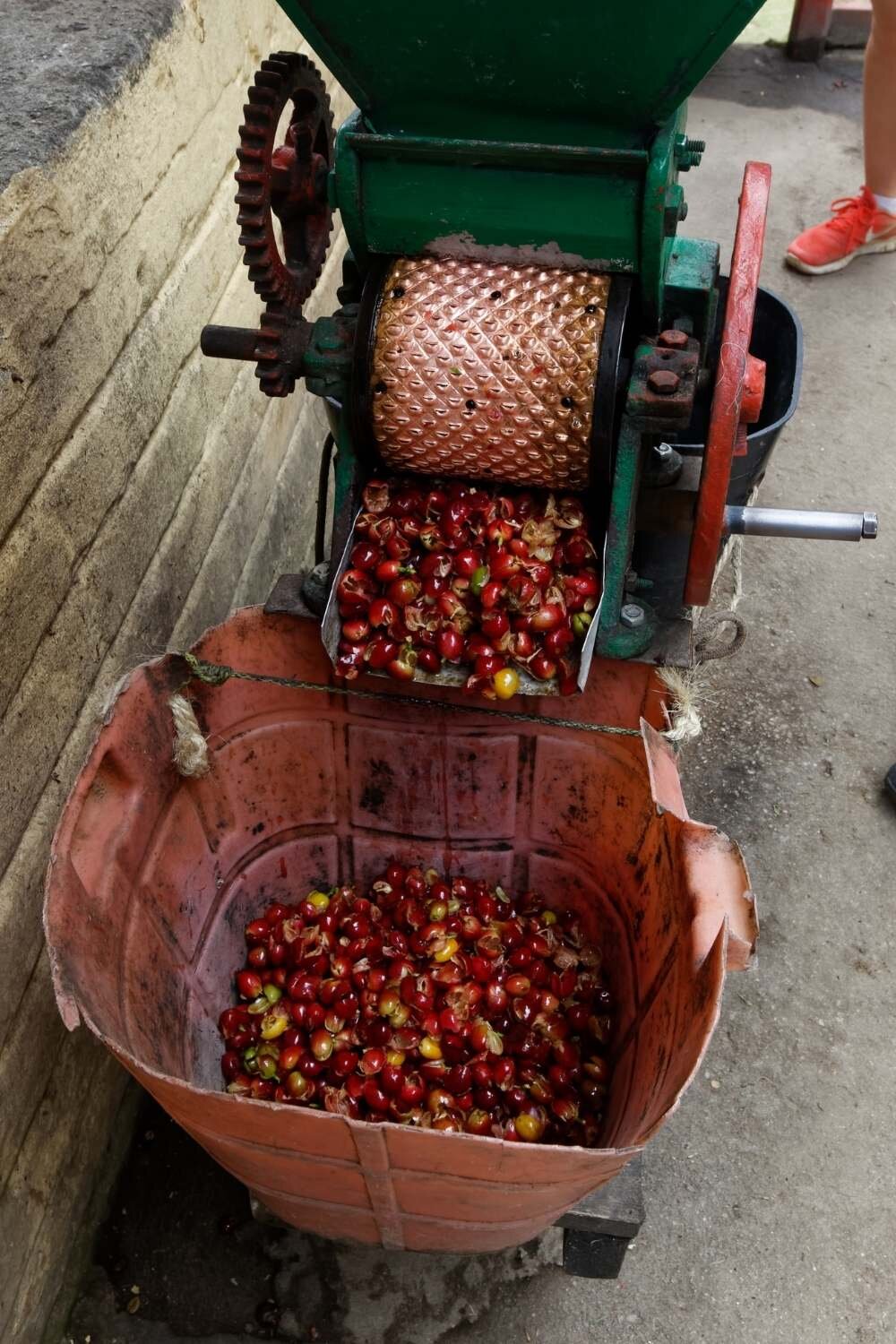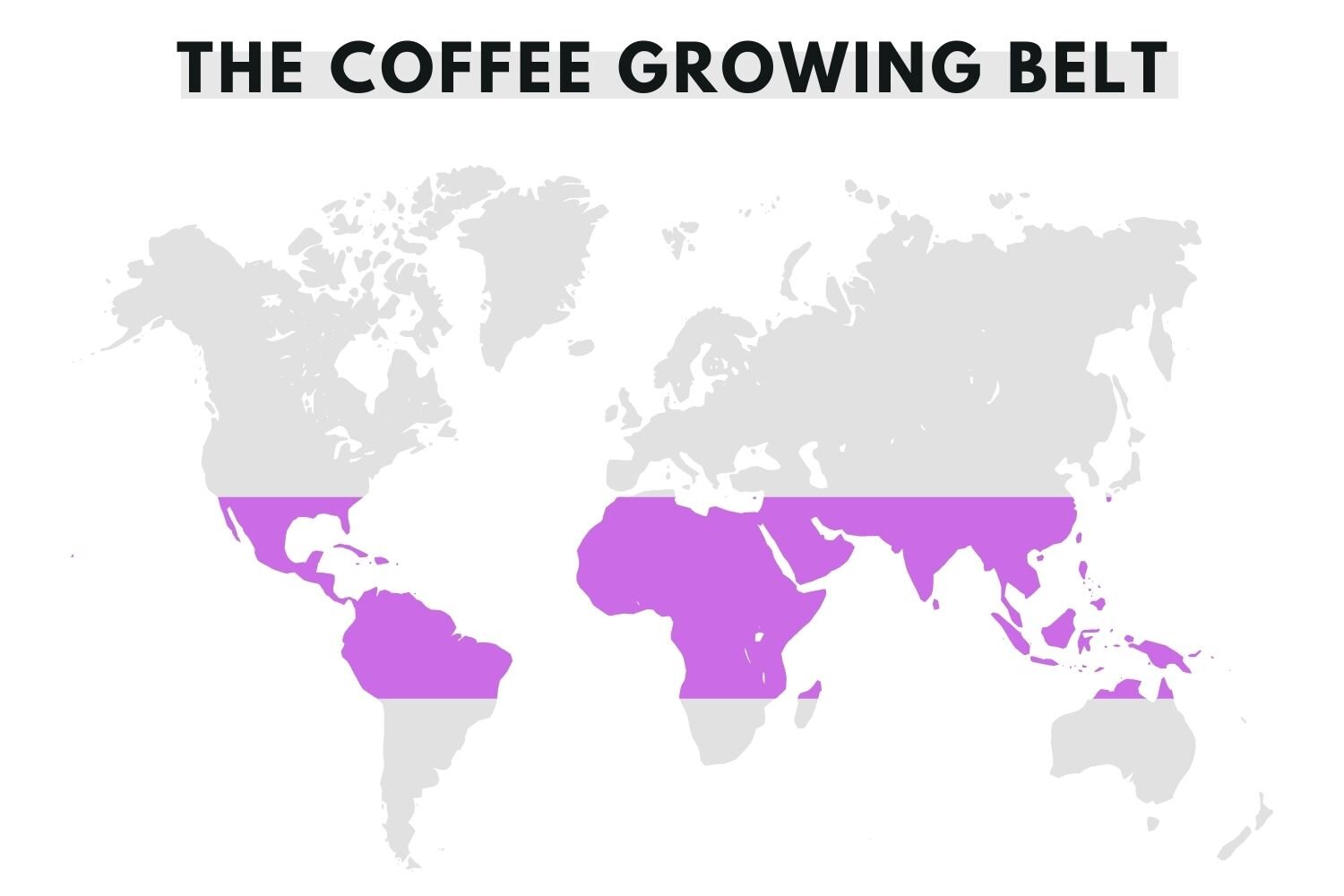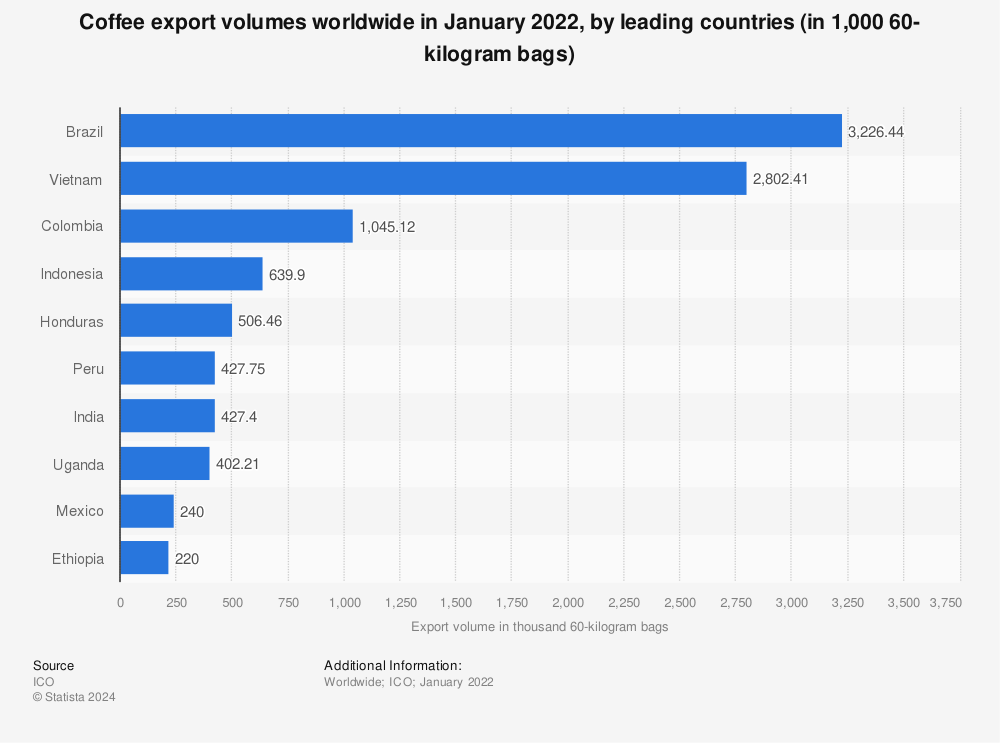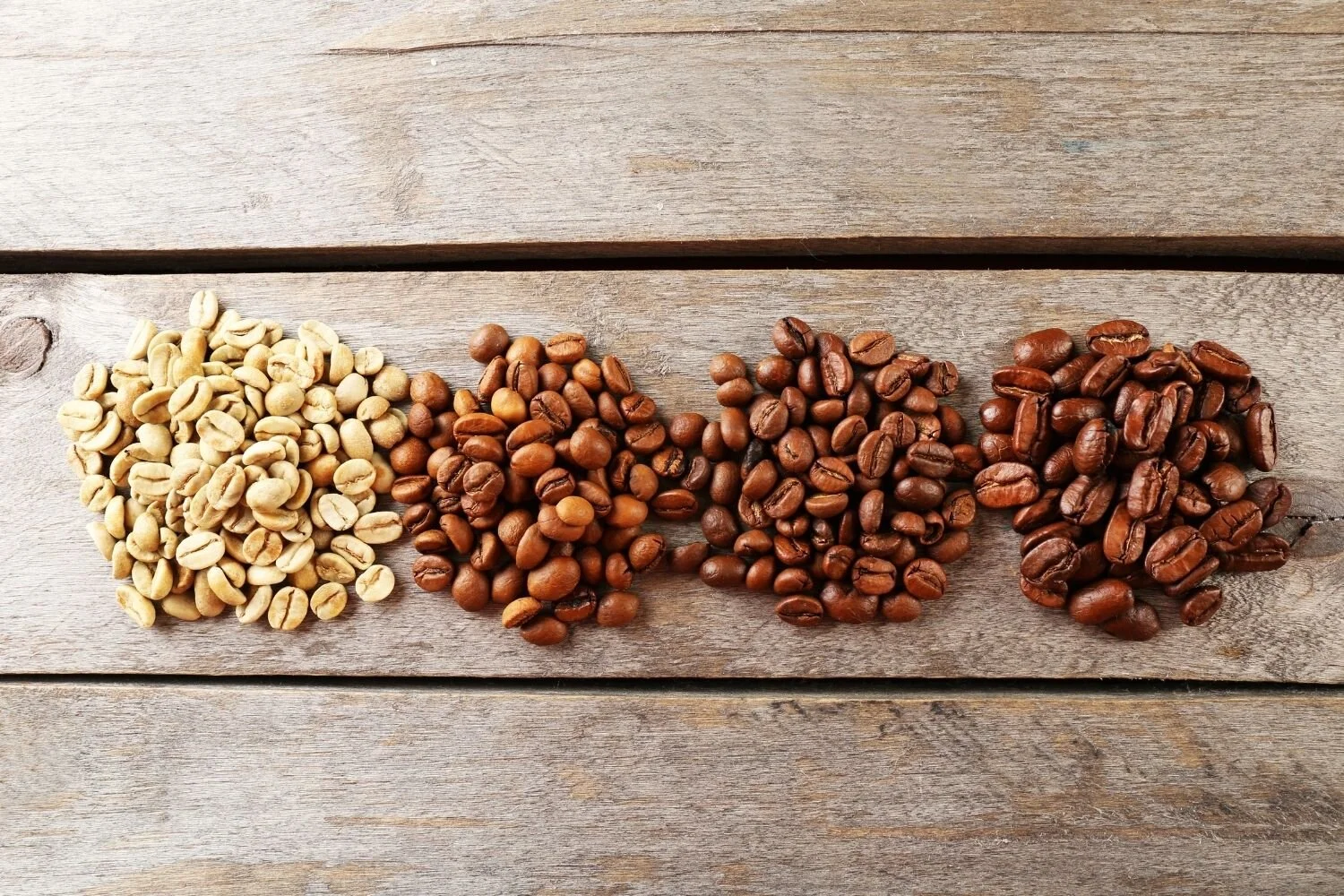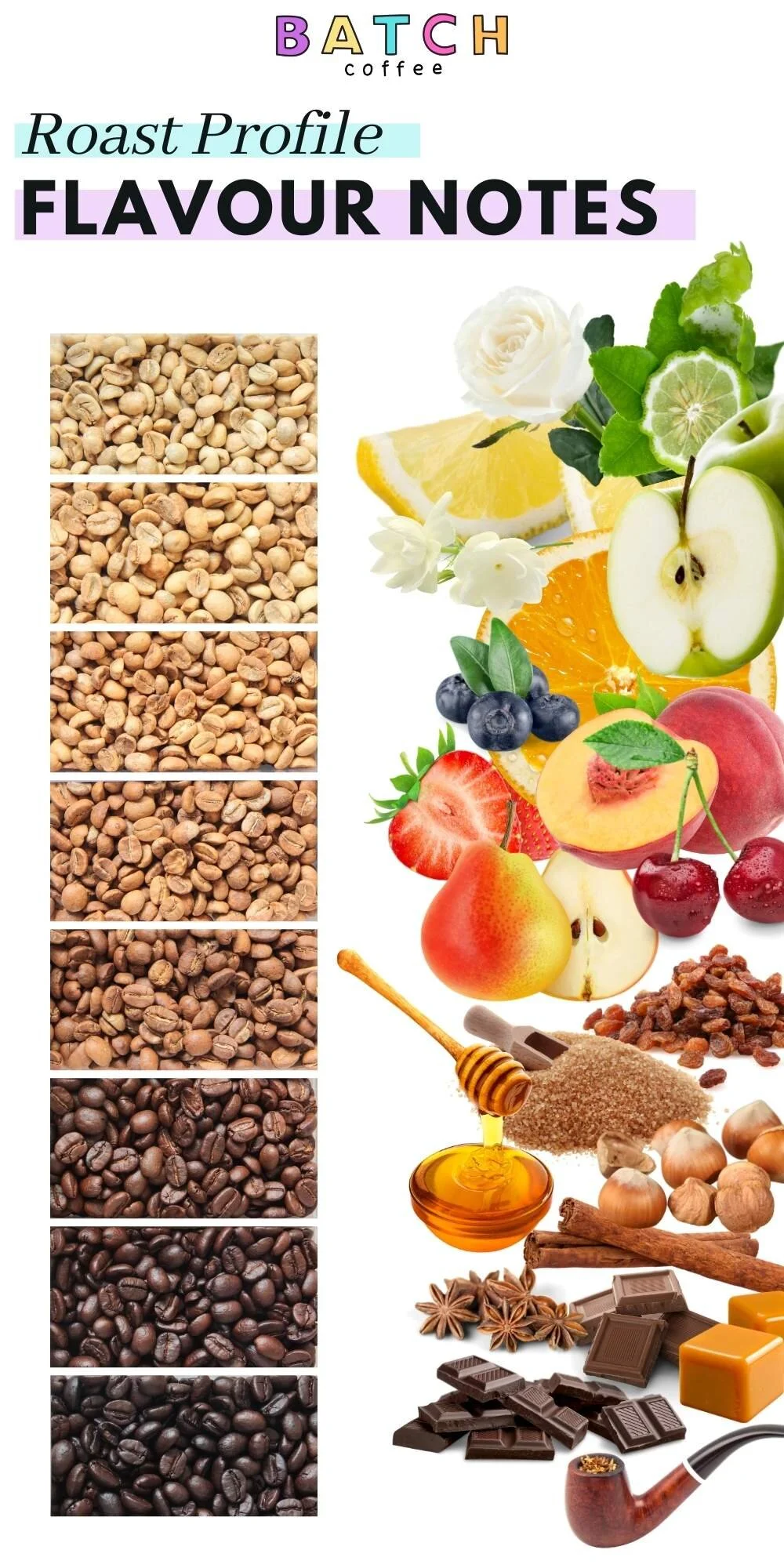Different Types of Coffee Beans
There are various ways to distinguish different coffee beans.
In this guide we will cover some of the most important factors in different types of coffee beans;
Type of coffee plant
Type of processing method
Origin of the coffee beans
Roast profile of the coffee
Coffee is grown all over the world in many origins.
It thrives in a warmer climate which is why you will find almost coffee growing regions within 20 degrees of the equator.
What Are The Different Types of Coffee Plant?
There are two main types of coffee; Coffae Arabica (Arabica coffee) and Coffea Robusta (Robusta coffee).
The two others, Liberica and Excelsa coffees are only found in South East Asia and make up a small percentage of the overall World production.
Of the two more common coffees Arabica is typically the more sensitive of the two, growing at altitude and on hilly landscapes.
Robusta is a much hardier plant and can be grown on flat low lands.
DISCOVER 2 DIFFERENT COFFEES IN EACH BOX
Pretty much all speciality coffee is Arabica coffee
The difference in taste and quality of the two coffees can be huge.
Arabica coffee, although a harder plant to grow possesses unique characteristics that can change from region and varietal.
While robusta can have different characteristics it normally lacks the acidity and sweetness that an Arabica coffee possesses but does tend to have higher caffeine content.
Robusta generally was used in blends to give the coffee depth and body while Arabica beans added the sweeter notes.
Although Robusta is still widely used in many commercially produced coffees, for the majority of independent roasters or speciality coffee shops the only way is Arabica.
Because of its difficultly in production and fussiness on where it likes to grow, Arabica historically has been a pretty expensive, luxurious coffee.
Although it still demands a higher price than Robusta coffee in general, the comparative cost ratio has decreased in recent years.
This is because more infrastructure and education has increased production and quality of Arabica as well as consumers demanding higher overall quality coffee.
Another thing that you will see on a coffee bag is the Variety of Coffee.
If this were likened to cars, Arabica and Robusta would be the car brand, while the variety would be the model. Here is a list of different varietals of arabica coffee plants;
What Are The Different Varietals of Coffee Beans?
Typica
is grown all over the world. Is considered the original variety of coffee.Bourbon
is found all over the world and is a natural mutation of the typica plant originating in Reunion. Was even more widely grown before the speciality market matured
Caturra
is a natural mutation of Bourbon founded in Brazil. Popular in Colombia and Central America. Tends to yield high scoring cup quality.
Mundo Novo
is a hybrid of Bourbon and Typica. Has a natural resistance to diseases and produces a high yield.Catuai
is a hybrid of Caturra and Mundo Novo that was created in Brazil. It makes up around 50% of Brazilian coffee.
Maragogype
is a mutation of Typica discovered in Brazil. It yields large beans referred to as Elephant beans.Pacas
was discovered by the Pacas family in El Salvador, it has high cup quality and is a low growing plant which makes picking easy.Pacamara
is a cross between the Pacas and Maragogype varieties. It has distinct cup qualities that are unique to the varietal and yields large beans.SL-28
was developed in Kenya in the 1930's, it produces amazing berry flavours and is widely sought after in the speciality coffee world.
SL-34
was a similar development to SL-28, in that it was created to grow during drought. Not as widely sought after, but still holds notable flavours.Geisha
is believed to be Ethiopian in origin, named after the town 'Gesha'. Brought to fame by a Panamanian farm for having an extremly unique flavour profile. Yields low quantity but high quality.Villa Sarchi
was first discovered in Costa Rica. Produces excellent cup quality.Kent
was created in India to combat leaf rust.S795
was also developed in India to combat leaf rust. Now widely plated in Indonesia
Heirloom
Many Ethiopian coffees are labeled as 'Heirloom', they are varieties that have been cross-bred and produce a huge range of exciting cup qualities.Catimor
is a cross between Caturra and Timor varieties to resist leaf rust Brazil.
Different Types of Processing Methods?
When coffee is picked from the coffee tree it is in the form of a cherry.
The outer layer is the soft fruit that guards the precious seeds (beans) inside. Sometimes you will see there is only one seed rather than two this is called a peaberry coffee bean.
Once the cherry is picked and before it can be eventually exported or roasted in needs to go through a process to strip off the fruit and dry out the coffee bean. This step of the coffee’s journey is referred to as the process.
There are many ways throughout the world in which the coffee is processed, it all depends on the countries climate, water availability, infrastructure and heritage.
The majority of speciality coffee is Washed.
This means that the coffee is picked, depulped off the fruit and the coffee bean’s mucilage (slimy outer layer of the coffee bean) is also washed off before the coffee is dried on beds.
It is the most efficient and controlled method to produce large quantities of coffee.
A common process that you will see in many speciality coffee shops too is natural.
This process is common in areas where water is hard to obtain. The coffee is dried with the cherry attached, this produces unique flavour notes but also poses a risk to bacteria affecting the drying process.
There are various other methods that are in between the two extremes of washed and natural coffees like honey or semi washed.
Where Do Coffee Beans Come From?
Coffee is grown all over the world but thrives 20 degrees either side of the equator.
The biggest exporter of coffee today is Brazil, they are a monster in the coffee-producing world and provide 25% of the world’s supply of coffee.
South American coffee is famed all over the world for its high quality and rich flavours.
The second biggest exporter of coffee throughout the world is Vietnam.
However, you will rarely see Vietnamese coffee marketed in speciality coffee shops because the vast majority of coffee exported is Robusta and used in commodity coffee like Nescafe. There are many coffee growing countries in Asia with some pioneering processing techniques.
Africa is the birthplace of coffee and home to some of the best speciality coffee on the market.
Kenyan and Ethiopian Coffee are two big players in the high-quality space. African coffee is famed for delicate floral and citrus notes.
Central American coffee has many origins that you will be accustomed to if you drink speciality coffee.
Although some countries produce comparatively small amounts of coffee the geography in this part of the world is perfect for growing super high-quality coffee
What is The Roast Profile of the Coffee?
In terms of roast there are generally three levels of roasting; Light, Medium and Dark Roasts.
Although there are other names given to specific roasts like French roast or Italian roast they are all in the dark roast category.
Getting into roasting is a bit of a rabbit hole and another blog completely.
However the rule of thumb is a lighter roast tends to be more acidic likened to citrus fruits. Medium roasts can be more fruity, more berry or brown sugar flavours and darker roasts more chocolate, nutty flavours.
This obviously is a massively sweeping statement as a medium roast can posses any flavour and there are notes of fruit in darker coffees. But in simple terms, these are the basic rules.
What kind of Coffee Bean Should You Choose?
Coffee is of course all about preference and specific tastes, however, there are a few things to keep in mind that will aid you in choosing the best type of coffee beans.
The first issue is the type of coffee plant you would like to try.
The majority of speciality coffee today is Arabica coffee if you buy your coffee from an independent coffee roaster most of the time you will be dealing with Arabica whether it’s in a blend or as a single origin.
This is the more superior coffee plant and has a huge array of flavour notes.
Arabica does tend to be slightly more expensive than Robusta coffee or Robusta and Arabica blends.
If you don’t mind the bitter taste then opting for a coffee that incorporates robusta may be for you.
Many commercial grade coffee that you will find in supermarkets will have robusta coffee added to give body and depth.
If you are willing to part with slightly a few more pennies and want to experience the world of speciality coffee then Arabica is the coffee choice for you. Check out the best coffee box UK for some incredible coffee brands.
A question to ask yourself is what sort of flavours do I want to taste.
First of all roast profile plays a huge role in the overall taste of the coffee.
The majority of the time, dark roasted coffee has chocolatey richer notes which turn sweet or fruity at a medium roast then floral or acidic at a light roast.
Certain coffees are also engineered to have less of a certain attribute, lifeboost coffee for example has less of an acidic nature for people with various health issues.
The next question is, how do you take your coffee?
If you like to drink your coffee as an espresso-based milk drink like a latte or a cappuccino then you may find a more full-bodied coffee will be able to hold its flavour. T
ake a look at various blends that the majority of roasters will showcase, there is always differentiating factors in blends however there is nearly always a full body.
If you’re more partial to an espresso then maybe take a look at single origins from Colombia, Brazil or Sumatra. Although all of these countries produce a wide range of coffee types, they also grow a lot of coffee with rich chocolatey notes and sweet flavours which lend themselves nicely to an espresso.
If you like to drink your coffee long and black, whether it’s from your espresso coffee machine, filter method, or cafetiere then maybe try some African coffee if you like delicate floral flavours or citrus notes or if you like a fruitier flavour then look out for naturally or honey processed coffee from Central America.
Here is our Cuban coffee recipe.
All of the above can actually be completely the wrong advice, you may find a really acidic blend that works really well as a filter coffee or you can find some full-bodied African coffees that work really well in a latte.
However, you will be able to make an educated guess looking at the roast profile, origin and process.
Why is Arabica More Expensive Than Robusta?
Arabica coffee is generally more expensive than robusta coffee because it is harder to grow and produce. Arabica is a fussy old plant and only thrives in high altitude and within 20 degrees of the equator. The most highly sought after arabica beans also grow on hillsides which make them incredibly hard to harvest.
Robusta on the other hand can be grown in low altitude and is a far more hardy crop which makes it easy to grow but lacking the unique flavour profiles that can be present on arabica coffee beans.
Which coffee type is best?
For us here at Batch Arabica coffee is superior to any of the other types of coffee that are are available. This is because there are subtle complexities in the flavour profile of Arabica coffee unlike other types of coffee such as Robusta.
However, some people do prefer the dark bitter notes and the higher level of caffeine in Robusta.



